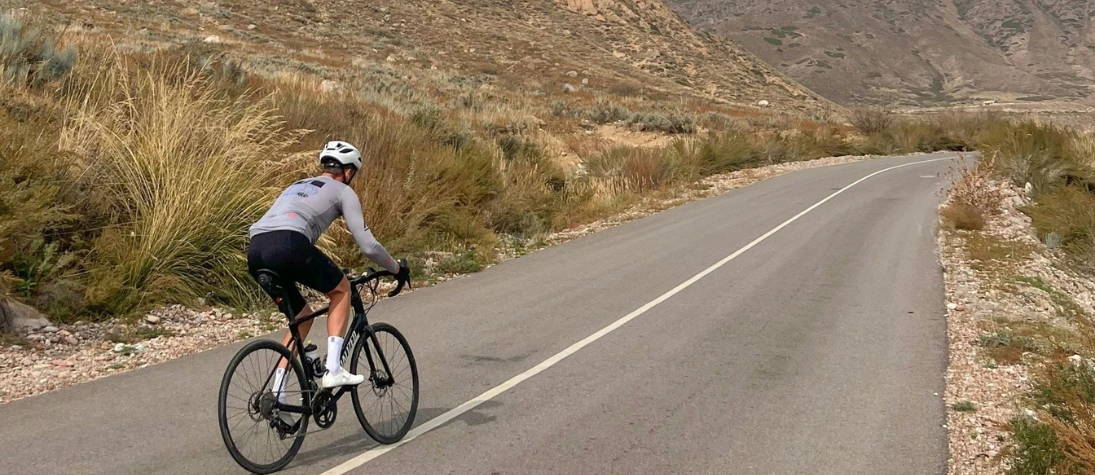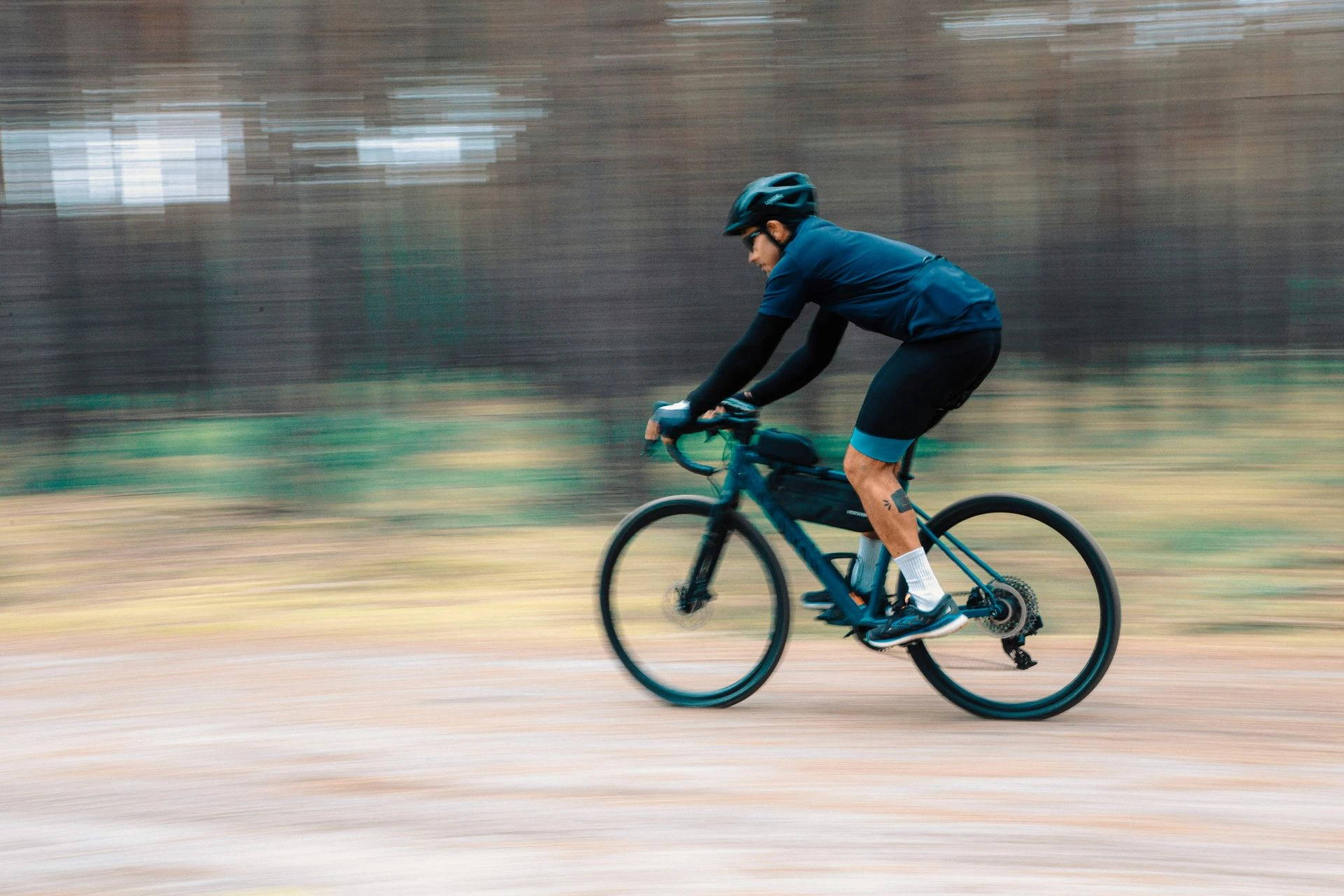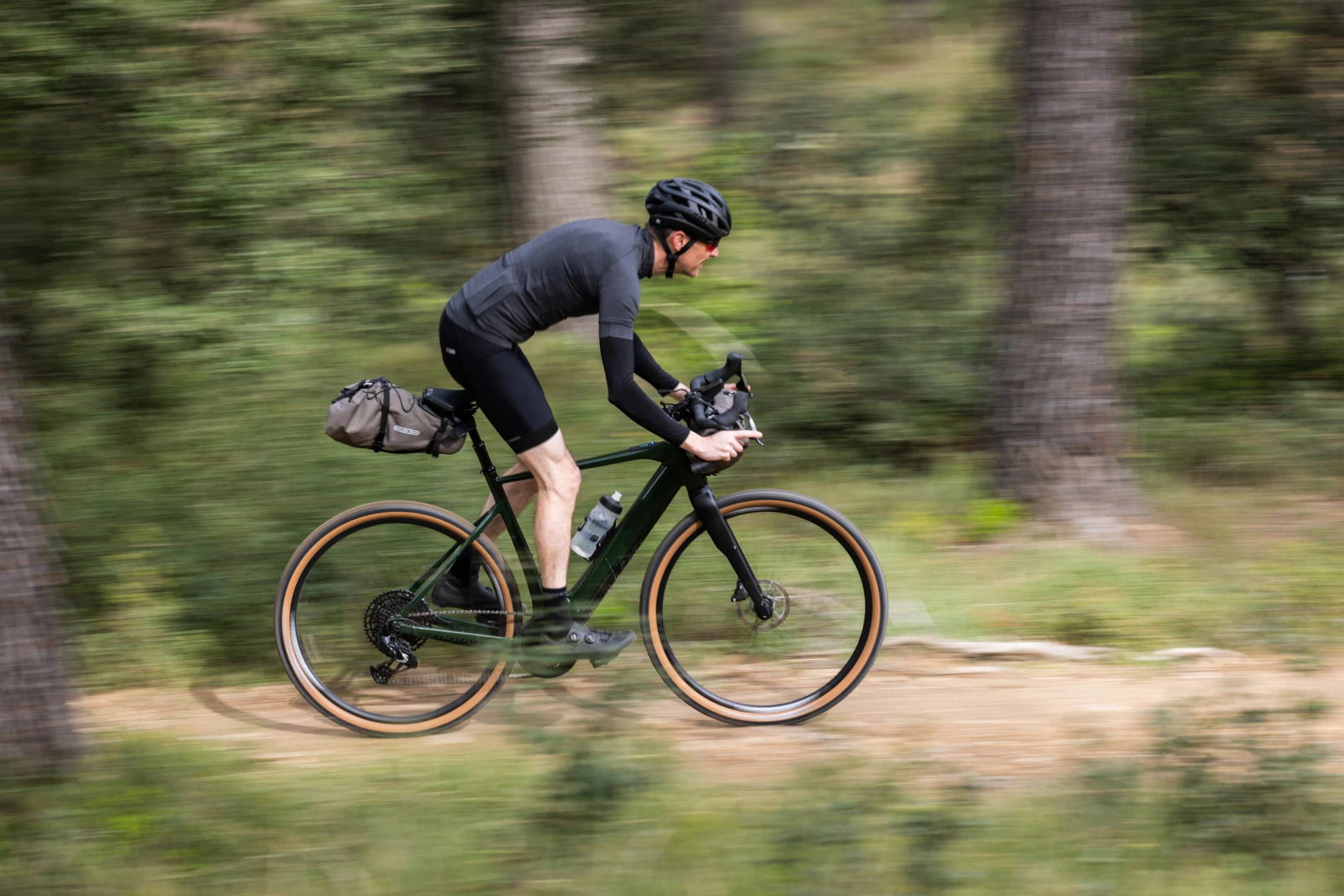In general, 15 to 20 km/h for an amateur, 20 to 25 km/h for an experienced cyclist, and over 25 km/h for the pros.
Average gravel road speed: what you need to know
Improving your speed on the road is pretty obvious on a road bike, you just need to put in the means and the will. But when it comes to gravel bikes, designed for compromise on all types of terrain, there are more factors to take into account and choices to be made. We'll guide you through what influences average speed on a gravel bike, from the bike to your equipment, and how to improve it.

©Unsplash/Dmitry Limonov
How fast can you go on a gravel road?
How do you calculate average speed?
The operation is simple, the distance/time calculation. The average speed of a gravel road bike is the distance of your journey divided by the time taken. In general, the average speed for amateur cyclists is 15 to 20 km/h. 20 to 25 km/h is a good speed for more experienced cyclists, while professional cyclists will go even faster!
This average road gravel speed is a few km/h slower than the average road bike speed. Road bikes are lighter, more aerodynamic and have more streamlined wheels.
What influence does an electric gravel bike have on average speed?
As all electric bikes in Europe must respect the 25 km/h speed limit, the electric gravel bike easily reaches this speed on the road. Multiplying the power delivered to complement the cyclist, the motor makes it possible to ride at an average speed of 25 km/h without great effort, even for an amateur cyclist.
Beware: with its battery, it increases weight by several kilos. This makes it more difficult to maintain speeds above 25 km/h, and the electric gravel bike will be at a disadvantage on the steepest gradients, where the motor will reach its limits.

Yamaha
How can I improve my average speed on a gravel bike?
Fitness is an essential part of any cyclist's life, even an amateur. One ride a week is a minimum, two or even three is even preferable to maintain a level of fitness that enables you to reach a good speed and maintain a good heart rate during exercise. Training can be done using a home trainer, which is easier to use on a daily basis and adds several hours a week.
At the same time, stretching before and after riding your gravel bike is essential. Don't forget to strengthen your legs regularly and eat a healthy diet. Finally, it almost goes without saying that the bike you choose should be suited to your size, shape and riding style.
Factors influencing average gravel performance
The weight
Any cyclist looking for performance knows that weight is one of the major characteristics to consider before buying. The choice of frame material may be made for comfort (steel versus aluminum or carbon fiber, for example), but it can alter the weight by several hundred grams. The materials used for the handlebars, stem, seat tube or wheelset can also reduce weight.
Finally, the gravel enthusiast may hesitate with a suspension fork, but will easily add a kilo (or two). A stem suspension may be a good intermediate solution. Saddle suspension also adds comfort, albeit at the expense of weight.
The tires
This is one of the major differences between a gravel bike and a road bike: tires. Wider, these tires optimize grip on gravel or dirt, yet they have an impact on aerodynamics and surface contact with the ground.
Adapt the width of your tire according to the type of activity you do, between classic road sections and dirt roads:
- 40 to 50 mm for off-road use, with more technical passages,
- 35 to 40 mm on multi-purpose terrain alternating gravel paths and traditional roads,
- 30 to 35 mm mainly on smooth roads ( tires fine roads are less than 30 mm).
Note that the profile of wide tires can vary, with some being more notched (squarer and therefore less aerodynamic) or, on the contrary, smoother and more rounded.

©Unsplash/Marc Zeman
Another aspect not to be neglected is the inflation of tires. Under-inflation to improve comfort and grip on stones will slow you down on the road. Don't hesitate to vary the pressure of your tires depending on the road surface.
The position
This may seem less obvious on a gravel bike, but its racing handlebars remind us that riding position is everything. The more your body is bent forward with your head down, the more you reduce the surface area in contact with the air. Less resistance means it's easier to pedal at a high average speed, or even increase it on your ride.
Every cyclist has a unique morphology, so choose your bike carefully first and foremost to pedal optimally in the perfect aerodynamic position. Even after purchase, saddle adjustments (front/rear, height) and stem spacers are possible to a lesser extent.
Aerodynamics
Just like position, bike components such as large wheels have an impact on air resistance. If your aim is to ride an electric bike equipped for several days, the saddle bag and frame bag have the least impact. Fork and handlebar bags will definitely penalize you, so limit the volume to your needs.
Your cycling equipment is an aerodynamic factor that can affect your average speed on a gravel bike. A close-fitting vest and shorts, and a streamlined helmet are the keys to gaining a few seconds over a kilometer.
Bonus: riding in a group is beneficial for the members behind the leading cyclist, who are subject to lower air resistance. It's not for nothing that we see professional cyclists at mind-boggling speeds in the Tour de France peloton, and team strategies to protect their leader over long distances!

Mustache Bikes
Weather conditions
A number of climatic conditions will prompt you to adapt your speed according to rain, temperature or wind. Rain changes grip and drastically reduces average speed on gravel bikes (with wider wheels). On the plus side, you can take more risks on winding downhill roads thanks to the superior grip of tires wide wheels.
However, wind is a cyclist's worst enemy (from the front and side), as well as his best ally (from the back). Positioning and aerodynamics are even more crucial in these conditions. Finally, even cyclists in good physical condition can be overcome by hot weather, especially when it's very humid. You need to reduce your cadence, and therefore your speed.
Height difference
Depending on where you live, the topography varies greatly. A cyclist in the flat terrain of the Landes will evolve quickly compared to a Savoyard! Positive gradient - or ascent, if you prefer - is a cyclist's nightmare, whether on gravel or road.
You need to estimate your route carefully before you set off, so that you don't burn out on the downhill and flat sections before you reach a major pass. By studying your route carefully, you can optimize your average road speed on a gravel bike.
The distance
The type of route you choose will have a major influence on your fitness and your ability to reach your goal. You can't expect a speed record over long distances, which will reduce your overall speed. Medium and short distances will enable you to reach a better speed.
The differences between a gravel bike and a road bike
The gravel bike is a compromise between a traditional road bike and a MTB. It allows you to maintain a high average speed on the road, thanks to its road frame with a similar shape - albeit with a slightly modified geometry - and its racing handlebars involving an aerodynamic position.
It features wider wheels and tires , maintaining good handling and grip on trails. It's more compatible with adventure riding on varied terrain or bikepacking if fitted with panniers, and sometimes with suspension. Comfort and versatility, but lower average road speed.
Frequently asked questions
What is the average speed of a gravel bike on the road?
Why is the speed on a gravel bike lower than on a road bike?
Gravel bikes are heavier, with wide tires and less aerodynamic than road bikes.
What average speed can you reach with an electric gravel bike?
With assistance, you can easily reach 25 km/h, but the weight of the battery limits the speed beyond that.
What factors influence average gravel speed?
Bike weight, tires, position, aerodynamics, weather, gradient and distance.